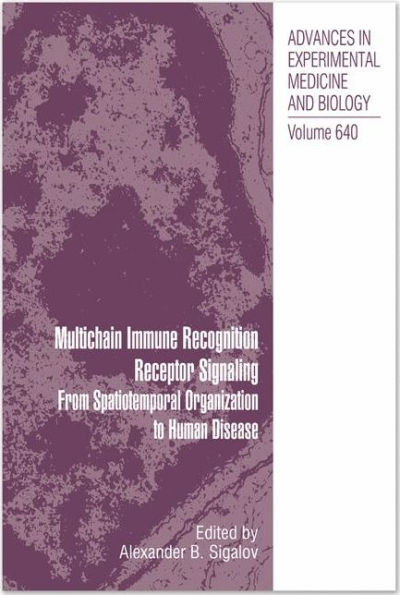5
1
9780387097886



Multichain Immune Recognition Receptor Signaling: From Spatiotemporal Organization to Human Disease / Edition 1 available in Hardcover, Paperback

Multichain Immune Recognition Receptor Signaling: From Spatiotemporal Organization to Human Disease / Edition 1
- ISBN-10:
- 0387097880
- ISBN-13:
- 9780387097886
- Pub. Date:
- 10/27/2008
- Publisher:
- Springer New York
- ISBN-10:
- 0387097880
- ISBN-13:
- 9780387097886
- Pub. Date:
- 10/27/2008
- Publisher:
- Springer New York

Multichain Immune Recognition Receptor Signaling: From Spatiotemporal Organization to Human Disease / Edition 1
$169.99
Current price is , Original price is $169.99. You
169.99
In Stock

Product Details
| ISBN-13: | 9780387097886 |
|---|---|
| Publisher: | Springer New York |
| Publication date: | 10/27/2008 |
| Series: | Advances in Experimental Medicine and Biology , #640 |
| Edition description: | 2008 |
| Pages: | 357 |
| Product dimensions: | 6.80(w) x 10.20(h) x 1.00(d) |
About the Author
From the B&N Reads Blog
